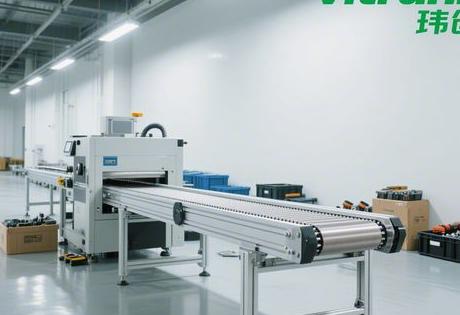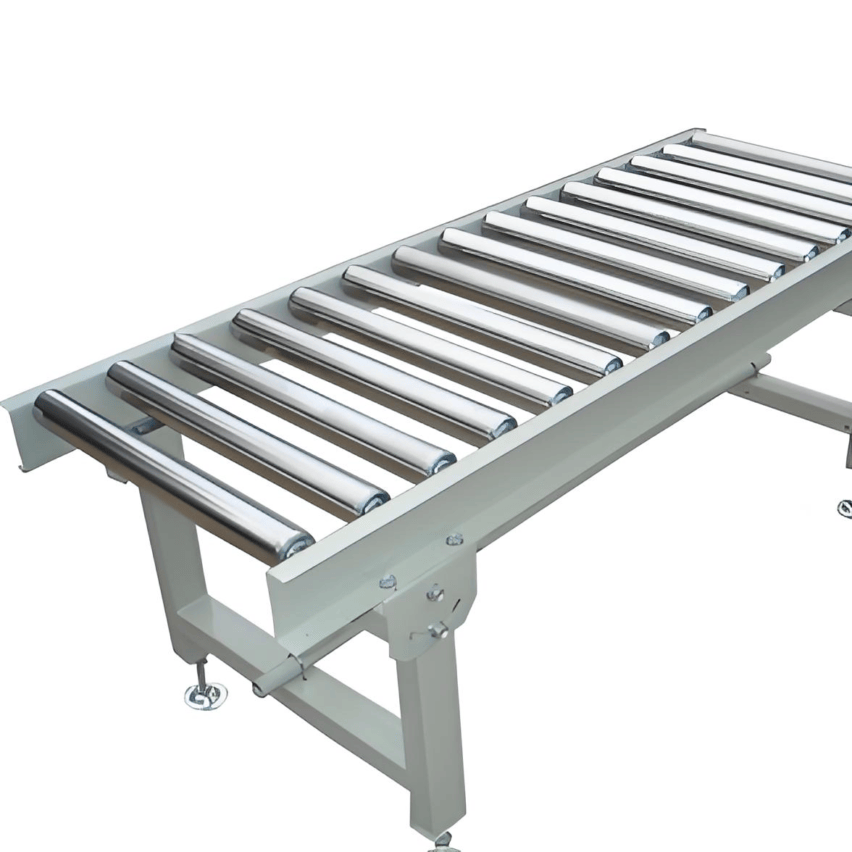## I. Technological evolution: the leap from basic machinery to intelligent systems
Conveyor lifts were born in the industrial logistics revolution in the mid-20th century and were originally designed to solve the problem of material transfer between production lines. Early products were based onWire rope traction + chain driveFor the core, through the winch to achieve vertical displacement, but there are limitations such as low positioning accuracy (± 50mm or more), carrying capacity is weak (≤ 500kg), etc. After 2000, the popularity of hydraulic drive technology, Xinggang and other enterprises to introduce the servo motor system, the positioning error is compressed to ± 5mm, the carrying capacity of the breakthrough in the 2 tonnes.

The wave of intelligence from 2010 to the present has spawned three major innovations:
- Multi-segment cooperative controlSpeed is adjusted by 12 sections of independent frequency conversion roller conveyor, and the stoppage of the first section automatically triggers the chain braking of the second section, which completely solves the risk of steel stacking.
- Safe and redundant designDual hydraulic cylinders with explosion-proof valves, real-time monitoring of lifting and lowering distance with grating rangefinder, mechanical self-locking device can be activated in case of accidental power failure.
- Modular ArchitectureAdoption of the embedded quick release structure of the bearing housing reduces the maintenance time from 8 hours to 1.5 hours, and the equipment availability rate reaches 98.6%.
## II. Core design analysis: fusion of structural innovation and intelligent control
Structural Breakthrough Design
- Space Optimisation AgencyThe combination of pressure feed roller and drop cylinder developed by CMECEDI improves the cooling uniformity of material turning by 28%, solving the problem of space limitation in the old factory building.
- Anti-biased load systemDual moving pendulum shafts with ball sliders eliminate horizontal oscillation during lifting and lowering, ensuring that the deflection rate under 10 tonnes load is <1.5%.
- Compound drive mechanismThe hydraulic rod thrust is converted into the horizontal displacement of the rack and pinion, and then the gear mesh drives the flap to open and close, realising the integration of loading and unloading protection.
Intelligent control upgrade
The temperature-pressure closed-loop system dynamically calibrates the lifting height through a laser range finder. For example, Xingsteel's 5# line controls positioning fluctuations to ±3mm and reduces energy consumption by 22%. The AI prediction model developed by SMS predicts equipment fatigue points and warns of failures 72 hours in advance.
personal viewpoint: The current technology race has shifted from hardware stacking toControl algorithm optimisation. Qinggang's practice has shown that the digital twin system has shortened the commissioning cycle by 70%, and the future winner lies in how to transform physical parameters into data assets.
## III. Multi-dimensional application scenarios: from construction sites to smart factories
Construction (55% of total demand)
In super high-rise construction, the self-propelled scissor lift platform has a load capacity of 5 tonnes, with wind speed sensors automatically locking under strong winds of grade 8. Adopted in Shanghai Centre Tower ProjectSegmented relay conveyingmode, setting a record of 320 tonnes of vertically transported building materials in a single day.
Logistics Hub (30% of demand)
E-commerce warehousing scenario with roller lifts and AGVs working together:
- The container is slid onto the lifting platform via an inclined roller conveyor (15°-35°).
- The laser scanner automatically recognises the size of the goods and allocates them to the corresponding floor.
- The jacking traverse mechanism switches between levels in 0.5 seconds.
Jingdong Asia No. 1 warehouse thus reduces sorting manpower costs by 67%.
Special Scenario Innovations
- Semiconductor workshop: clean room special type equipped with FFU laminar flow hood, particle concentration ≤ Class 10
- Cold chain logistics: -30°C low-temperature bearings + anti-condensation circuit boards with extended failure intervals up to 4000 hours
- New energy battery line: explosion-proof lifting platform linked with nitrogen fire extinguishing system
## IV. Technology Frontier: The Collision of Digital Twins and Green Energy Efficiency
Existing technical bottlenecks
- Seal deterioration due to rapid temperature rise (>80°C) of the hydraulic fluid under high load conditions
- Communication delay in multi-computer collaboration (≥200ms)
- Lithium battery plant explosion-proof requirements and the contradiction of motor power
Breakthrough Solutions
- Hybrid drive systems: Anshan Steel trials supercapacitor + diesel dual power in 90-tonne lift, reducing peak power consumption by 40%
- 5G edge computingSany Heavy Industries achieves 1ms level control command distribution and synchronisation error <0.1mm for 32 machines.
- Phase change materials for heat dissipationAl-Si alloy heat dissipation module developed by CSR Zhuzhou to control the temperature rise of hydraulic system within Δ15℃.
The latest EU certification data shows that lifts with permanent magnet synchronous motors are 32% more energy efficient than traditional asynchronous motors. and theMagnetic Levitation Guide Wheel TechnologyThe introduction of the friction loss is reduced to 1/18 of the traditional slide, which may subvert the logic of a hundred years of mechanical transmission.
Core Q&A about conveyor line lifts
Q1: What are the core advantages of modern conveyor lifts over traditional freight lifts?
centreProcess Embedding CapabilitiesConveyor line lifts can directly interface with roller/belt lines for seamless "horizontal-vertical-horizontal" flow. Tests by Mitsubishi Heavy Industries have shown that this design reduces material turnaround time in automotive welding shops by 54%.
Q2: Why is hydraulic drive still the mainstream solution?

power density ratioThe advantage is hard to replace: under the lifting speed of 2m/s, the volume of hydraulic system is only 1/3 of the electric actuator. experiments of XCMG Group proved that the 200-tonne lift adopts the hydraulic solution, which saves energy of 28% compared with the silk rod drive.
Q3: What technologies will change the industry landscape in the future?
aheadthree-stage leap::
- Digital twin platform enables virtual debugging (Danieli Cyclux system has cost reduction of 70%)
- Hydrogen fuel cell solves mobile equipment range bottleneck (Sany prototype operates continuously for up to 72 hours)
- Superconducting magnetic levitation completely eliminates physical contact (15cm levitation gap in ThyssenKrupp's lab in Germany)
Exclusive data insights
According to the industry report 2025, China conveyor lifts market size will exceed 80 billion yuan, of whichIntelligent Synergy SystemCAGR of 34.7%.It is worth noting that the procurement volume of warehousing projects in tier 3 cities exceeded that of tier 1 cities for the first time, confirming theSinking market automationThe exploding trend. And with new EU regulations requiring new installations to be equipped with carbon footprint monitoring modules after 2027, this green revolution will reshape the global supply chain landscape.













